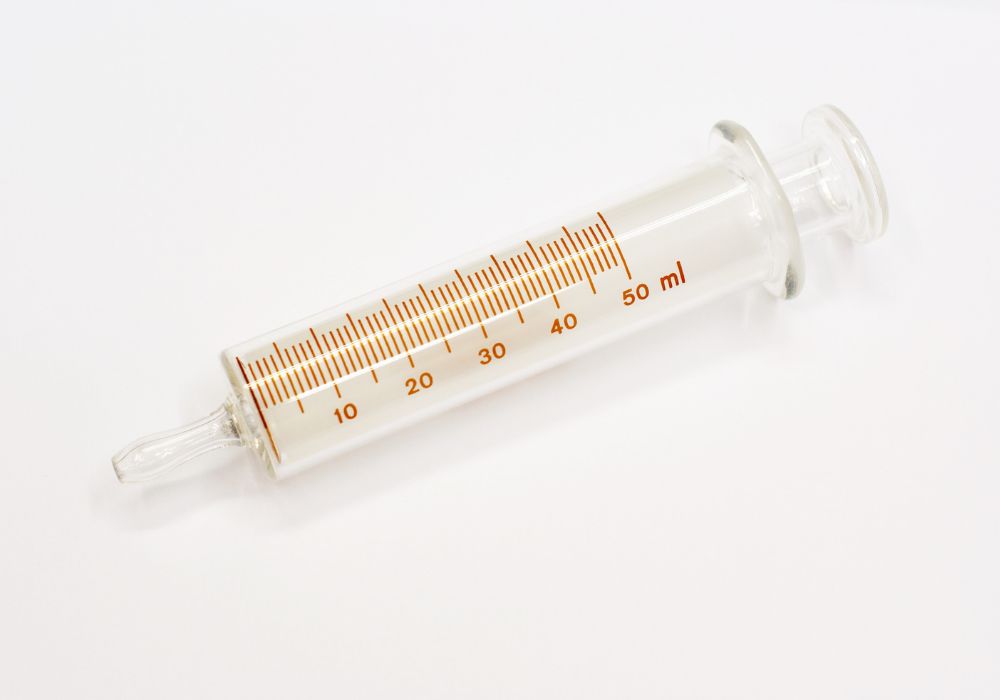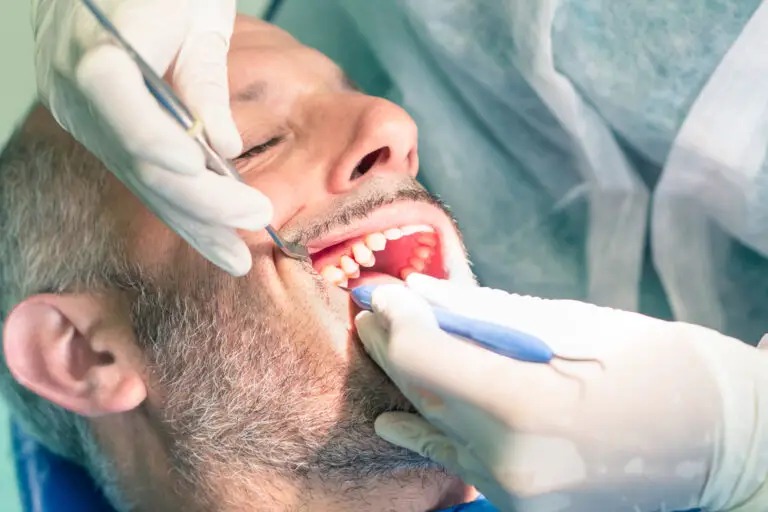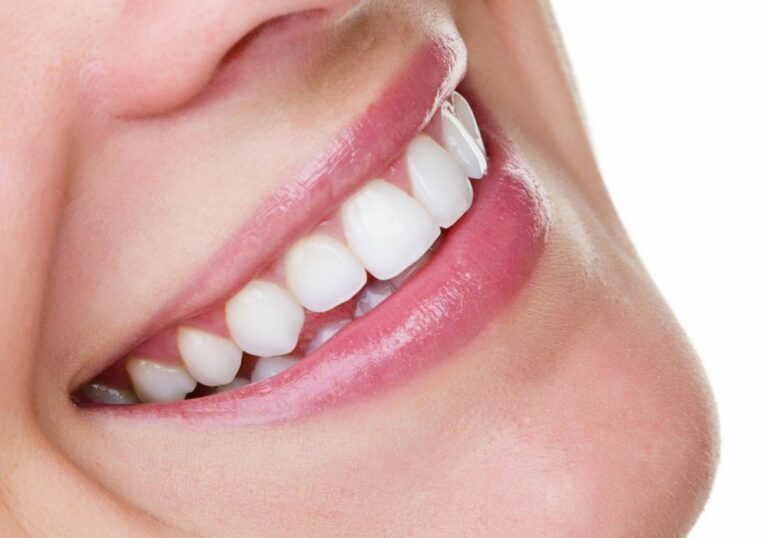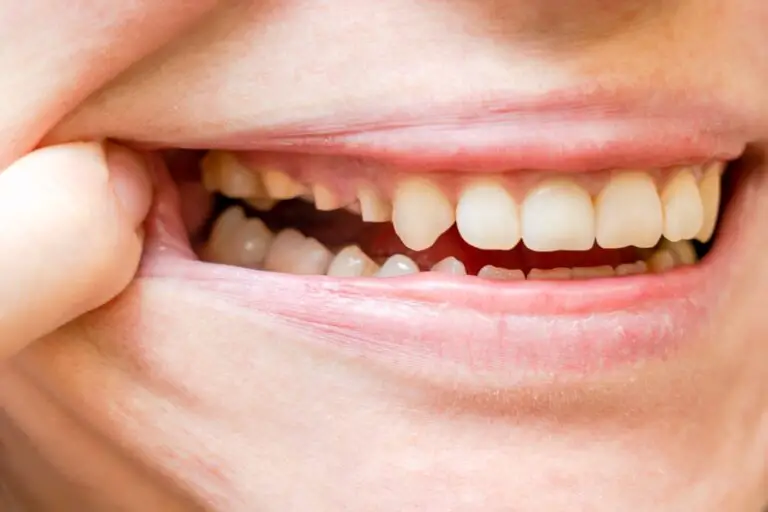If you have recently undergone wisdom tooth extraction, you might be wondering when you can start using an irrigation syringe to clean your sockets. The answer to this question depends on the recommendations of your oral surgeon or dentist, as well as your individual healing progress. However, there are general guidelines that can help you determine when it is safe to start using an irrigation syringe.
Typically, it is recommended to wait at least 72 hours after your wisdom tooth extraction before using an irrigation syringe. This waiting period allows the blood clot to form and stabilize, which is crucial for proper healing. Using an irrigation syringe too soon can disrupt the blood clot and delay the healing process. Additionally, using an irrigation syringe too early can be painful and uncomfortable.
Once you have waited at least 72 hours, you can start using an irrigation syringe to clean your sockets. Your oral surgeon or dentist will likely provide you with specific instructions on how to use the syringe and what solution to use for irrigation. It is important to follow these instructions carefully to prevent complications and promote proper healing.
Understanding Wisdom Teeth Removal
If you are experiencing pain or discomfort in the back of your mouth, it may be due to your wisdom teeth. Wisdom teeth are the last set of molars to emerge, usually appearing in your late teens or early twenties. However, not everyone develops wisdom teeth, and some people may only have one or two instead of the typical four.
Sometimes, wisdom teeth may not have enough room to grow properly, causing them to become impacted. This can lead to a variety of issues, including pain, infection, and damage to surrounding teeth. In these cases, your dentist or oral surgeon may recommend that you have your wisdom teeth removed.
Wisdom teeth removal is a common outpatient procedure that involves the surgical extraction of one or more wisdom teeth. The procedure is typically performed under local anesthesia, which numbs the area around your mouth, or general anesthesia, which puts you to sleep during the procedure.
After the procedure, you may experience some discomfort and swelling, which can be managed with pain medication and ice packs. Your dentist or oral surgeon may also recommend that you use an irrigation syringe to flush out the extraction site and promote healing. However, it is important to wait at least 72 hours after the procedure before using the syringe to avoid disturbing the blood clot and causing further pain or complications.
Overall, wisdom teeth removal is a safe and effective way to address issues related to impacted wisdom teeth. If you are experiencing pain or discomfort in your mouth, talk to your dentist or oral surgeon to determine if wisdom teeth removal is right for you.
What is an Irrigation Syringe?

An irrigation syringe is a small, plastic device used to irrigate wounds or cavities with a fluid. In the case of wisdom teeth removal, an irrigation syringe is used to flush out the empty sockets left behind after the teeth are extracted. This helps to remove any food particles or debris that may have accumulated in the sockets, reducing the risk of infection and promoting healing.
Irrigation syringes typically have a curved tip that allows for easy insertion into the socket. They are usually provided by the oral surgeon or dentist who performed the extraction, along with instructions on how to use them.
It is important to note that irrigation syringes should not be used until a few days after the extraction. Using them too soon can disturb the blood clot that forms in the socket, which is essential for proper healing. Most dentists recommend waiting at least 72 hours after the extraction before using an irrigation syringe.
When using an irrigation syringe, it is important to use a lukewarm saline solution or tap water to irrigate the sockets. This helps to further reduce the risk of infection and promote healing. It is also important to use the syringe gently, avoiding any forceful or aggressive movements that could damage the delicate tissues in the socket.
Overall, an irrigation syringe is a simple but effective tool for promoting healing and reducing the risk of infection after wisdom teeth removal. By following the proper instructions for use and waiting until the appropriate time to start using it, you can help ensure a smooth and successful recovery.
When to Start Using Irrigation Syringe
After wisdom teeth extraction, it is crucial to maintain good oral hygiene to prevent infections and promote healing. One of the tools that can help you achieve this is an irrigation syringe. However, it is essential to use it at the right time to avoid complications.
According to dental professionals, you should start using the irrigation syringe 72 hours after your wisdom teeth removal. Using it before this time can disturb the blood clot and cause pain and discomfort.
When you start using the syringe, you should follow your surgeon’s instructions carefully. Typically, you will be advised to use lukewarm saline solution or tap water to irrigate your sockets. You should use the curved-tip irrigation syringe provided to you and aim it at the extraction site to remove any debris.
It is essential to use the irrigation syringe gently and avoid applying too much pressure as it can cause discomfort and delay the healing process. You should also avoid using any mouthwash or other oral rinses until your surgeon advises you to do so.
In summary, using an irrigation syringe can help you maintain good oral hygiene after wisdom teeth extraction. However, it is crucial to start using it at the right time to avoid complications. Follow your surgeon’s instructions carefully and use the syringe gently to promote healing and prevent infections.
Correct Usage of Irrigation Syringe
Using an irrigation syringe properly is essential to promote healing and prevent infection after wisdom teeth removal. Here are some tips to help you use your irrigation syringe correctly:
- Wait at least 72 hours after your wisdom teeth removal before using an irrigation syringe. This will allow the blood clot to form and prevent it from dislodging.
- Use a lukewarm saline solution to irrigate your sockets. Do not use tap water or any other solution without first consulting your dentist or oral surgeon.
- Fill the syringe with the saline solution and gently place the tip of the syringe into the socket. Do not force the tip into the socket, as this can cause pain and damage to the healing tissue.
- Gently squirt the saline solution into the socket, aiming for the back of the mouth. Do not apply too much pressure, as this can also cause pain and damage to the healing tissue.
- Repeat the process for each socket, using a fresh syringe for each one.
- Use the irrigation syringe at least twice a day, or as directed by your dentist or oral surgeon.
- After using the syringe, rinse your mouth with warm water to remove any remaining debris.
Remember, using an irrigation syringe is an important part of your post-operative care after wisdom teeth removal. Be sure to use it correctly to promote healing and prevent infection.
Tips for Effective Irrigation

When it comes to irrigating your wisdom tooth sockets, there are a few tips that can help make the process more effective:
- Use warm saltwater: Warm saltwater is the best solution to use for irrigation. It helps to soothe the area and can help to reduce swelling and inflammation. Make sure the water is warm, but not too hot, as this can cause discomfort.
- Be gentle: When using the syringe, it’s important to be gentle. You don’t want to apply too much pressure, as this can cause discomfort or even damage the area. Instead, use a gentle stream of water to flush out any debris.
- Start slow: If you’ve never used an irrigation syringe before, it can take some getting used to. Start by filling the syringe with warm saltwater and testing the pressure on your hand or a piece of tissue. Once you feel comfortable, you can start using the syringe on your wisdom tooth sockets.
- Use after meals: It’s best to use the irrigation syringe after meals, as this is when food particles are most likely to get stuck in the sockets. This can help to prevent infection and promote healing.
- Don’t overdo it: While it’s important to irrigate your sockets regularly, you don’t want to overdo it. Too much irrigation can actually slow down the healing process. Stick to irrigating your sockets twice a day, or as recommended by your dentist or oral surgeon.
By following these tips, you can help to ensure that your irrigation is effective and promotes healing. Remember to be gentle, start slow, and use warm saltwater for the best results.
Potential Issues and Solutions
Over Irrigation
Over irrigation of wisdom teeth extraction sites can lead to complications such as dislodging of the blood clot, which can cause bleeding and delay healing. To avoid this, limit the use of the irrigation syringe to once or twice per socket per day. If you notice bleeding or pain after using the syringe, stop using it and contact your dentist.
Incorrect Usage
Improper usage of the irrigation syringe can also lead to issues. Inserting the syringe too deeply into the socket can cause damage to the extraction site or surrounding tissue. Be sure to follow the instructions provided by your dentist and use the syringe gently. If you are unsure of how to use the syringe properly, ask your dentist for a demonstration.
Infection Risk
Using an unclean irrigation syringe can increase the risk of infection. Be sure to clean the syringe thoroughly after each use and replace it regularly to avoid bacterial buildup. If you notice signs of infection such as swelling, redness, or discharge, contact your dentist immediately.
In addition to these potential issues, it is important to note that not all patients require the use of an irrigation syringe after wisdom teeth extraction. Your dentist will provide specific instructions based on your individual needs and circumstances. If you experience any issues or have questions about the use of the irrigation syringe, do not hesitate to contact your dentist for guidance.
Maintaining Oral Hygiene After Wisdom Teeth Removal
After wisdom teeth removal, maintaining good oral hygiene is crucial to promote healing and prevent infection. Here are some tips to help you keep your mouth clean and healthy:
- Use an irrigation syringe: An irrigation syringe is a helpful tool for cleaning the extraction site. Our recommendation is to start using the syringe to irrigate the wisdom tooth hole 72 hours after your extraction. Be careful not to use it before the 72 hours because it can disturb the blood clot and cause pain. To use the syringe, stand in front of a mirror and pull your cheek out with your finger, a toothbrush, or a tongue depressor. This will allow you to see the extraction site and may open the incision up a bit to facilitate insertion of the syringe.
- Brush gently: Brush your teeth gently, avoiding the extraction site. Use a soft-bristled toothbrush and toothpaste that does not contain any harsh ingredients that could irritate the site.
- Floss carefully: Flossing is important to remove food particles and debris from between your teeth. However, be careful not to floss too close to the extraction site, as this could cause irritation or bleeding.
- Use a Waterpik: A Waterpik can be a helpful tool for cleaning your teeth and gums after wisdom teeth removal. It uses a stream of water to remove food particles and debris from hard-to-reach areas. When using a Waterpik, be sure to use the lowest setting and aim the stream of water away from the extraction site.
- Avoid smoking: Smoking can delay the healing process and increase the risk of infection. If you smoke, try to quit or at least avoid smoking for a few days after your extraction.
- Follow your dentist’s instructions: Your dentist will provide you with specific instructions on how to care for your mouth after wisdom teeth removal. Be sure to follow these instructions carefully and contact your dentist if you have any questions or concerns.
By following these tips, you can help ensure a smooth recovery and maintain good oral health after wisdom teeth removal.
Follow Up Care

After wisdom teeth extraction, it’s crucial to take proper care of your mouth to ensure a smooth recovery. One important aspect of follow-up care is the use of an irrigation syringe.
Typically, it is recommended to start using the syringe to irrigate the wisdom tooth hole 72 hours after your extraction. Using it before the 72 hours can disturb the blood clot and cause pain. It’s best to follow the instructions given by your surgeon or dentist regarding the use of an irrigation syringe.
If you have been given an irrigating syringe, start irrigation on the third day following the surgery. Your surgeon or dentist may recommend that you use either a lukewarm saline solution or tap water to irrigate your sockets. They may also provide you with a curved-tip irrigation syringe that you should begin using on day 5-7 after your surgery to aid in the removal of debris.
It’s important to use the syringe gently and not to be overzealous with the irrigation. Overuse of the syringe can dislodge the blood clot and cause dry socket, which can be a painful complication. If you experience any pain or discomfort while using the syringe, stop using it immediately and contact your surgeon or dentist.
In addition to using an irrigation syringe, it’s important to follow other post-operative instructions provided by your surgeon or dentist. These may include avoiding hard or crunchy foods, not smoking or using tobacco products, and taking any prescribed medications as directed.
By following proper follow-up care, including the use of an irrigation syringe, you can help ensure a smooth and successful recovery after wisdom teeth extraction.
Frequently Asked Questions
When can I start using an irrigation syringe after wisdom teeth removal?
Our recommendation is to start using the syringe to irrigate the wisdom tooth hole 72 hours after your extraction. Using it before the 72 hours can disturb the blood clot and cause pain.
How long do I need to use an irrigation syringe after wisdom teeth removal?
It is recommended to use the syringe for at least 5-7 days after your surgery, or until your sockets have fully healed.
Is it necessary to use an irrigation syringe for wisdom teeth?
While it is not necessary to use an irrigation syringe, it can help promote healing and reduce the risk of infection.
How do I properly use a dental irrigation syringe for my wisdom teeth?
Fill the syringe with warm salt water and gently place the tip of the syringe into the socket. Flush until the water comes out clean and clear. Repeat at least twice daily, preferably after every meal.
Where can I buy a syringe for irrigating my wisdom teeth?
You can purchase a dental irrigation syringe at most drugstores or online.
What should I do if I don’t have an irrigation syringe after wisdom teeth removal?
If you do not have an irrigation syringe, you can rinse your mouth with warm salt water. Avoid using a straw and be gentle when brushing your teeth.






